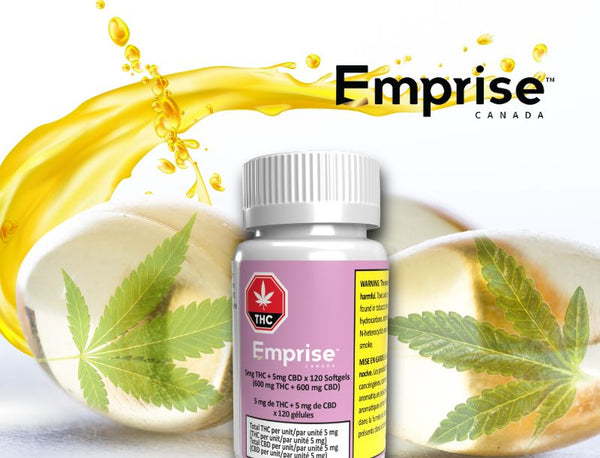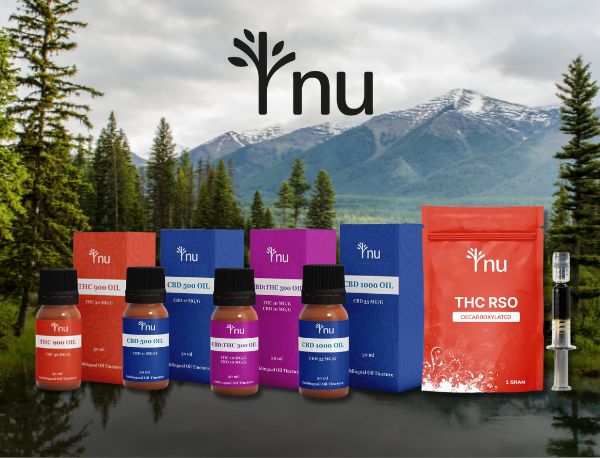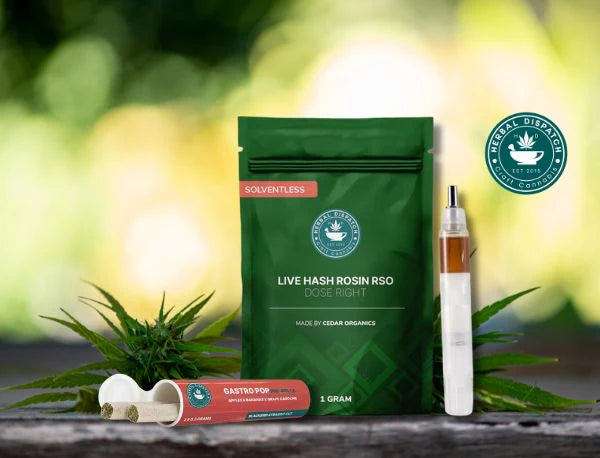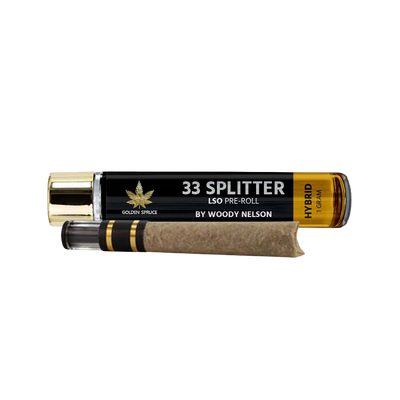Canada’s cannabis marketplace, redefined
Experience Craft Cannabis Like Never Before
New Products
Featured Brands
Champions of Craft Cannabis Since 2015
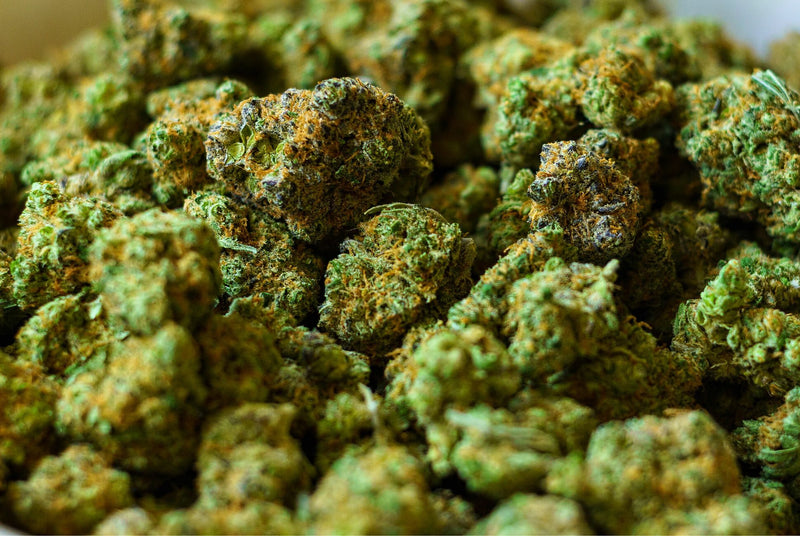
Herbal Dispatch has led Canada’s craft cannabis revolution, bringing members exclusive access to premium, small-batch products from the nation’s finest growers.

For the Cannasseurs. Golden Spruce rolling up the award winning 33 Splitter. Presented in a one gram glass tip pedestal. Sativa leaning cut grown by our dear friends at Woody Nelson in pure living soil.
- Regular price
- $16.95
- Sale price
- $16.95
- Regular price
-
$19.95 - Unit price
- per
Brands We Love
Best Sellers
Blog

#135: Next-Level Relief:
How Cannabis Is Revolutionizing Chronic Pain Management
Did you know that chronic pain affects more than 1 in 5 Canadians (about 7.6 million people) aged 45 and over? This creates an enormous impact on quality of life and daily functioning. While many have turned to cannabis for relief, most are only aware of its basic pain-relieving properties and are only scratching the surface of its potential benefits.
The days of simply choosing between indica and sativa are behind us. Today's pain management with cannabis involves cutting-edge research into microdosing, terpene profiles, and precision delivery methods that can transform the way we experience pain relief.
If you've been using cannabis for pain but feel like you're not hitting the mark, these advanced techniques could be the missing puzzle piece you've been searching for.
The new biology of cannabis-based relief

Recent research has revealed that cannabis terpenes are as effective as morphine at reducing chronic neuropathic pain. But here's the fascinating part: when terpenes are combined with cannabinoids, the pain-relieving effects are amplified without increasing negative side effects.
The entourage effect, a term coined by Dr. Ethan Russo, explains why whole-plant cannabis products often provide superior relief compared to isolated compounds. By working together, terpenes and cannabinoids create a synergistic effect that enhances the therapeutic benefits of cannabis.
University of Arizona researchers discovered that five specific terpenes (alpha-humulene, beta-caryophyllene, beta-pinene, geraniol, and linalool) activate adenosine receptors in the spinal cord, effectively blocking pain signals that travel along nerves.
This breakthrough helps explain why different cannabis strains can produce dramatically different pain-relief outcomes, even with similar cannabinoid profiles. For example, a strain high in beta-caryophyllene may be more effective for pain relief than one with higher levels of THC.
The art of microdosing

One of the most promising developments in cannabis pain management is microdosing. Using incredibly small amounts of THC (0.5-1 mg), microdosing allows users to experience the medicinal benefits of cannabis without any impairment or intoxication.
Microdosing works by taking advantage of the biphasic nature of THC. In essence, small doses may provide more medical relief than larger ones. This is because high doses of THC can have the opposite effect and increase pain and inflammation. By taking small, precise doses of THC, users can tap into the therapeutic properties of cannabis without any unwanted side effects.
In the world's first clinical trial on THC microdosing, researchers found that doses as small as 1 mg provided significant pain reduction that remained stable for over 2.5 hours, with participants reporting no cognitive impairment.
The key lies in cannabinoid receptor activation. Low doses of THC produce mild receptor activation that modulates pain perception and reduces inflammation without overwhelming the system. This gentle approach is more sustainable for long-term pain management than traditional higher-dose protocols.
Advanced methods for consistent dosing

The method you choose to consume cannabis dramatically impacts both the onset and effectiveness of pain relief. Thank goodness for modern delivery systems that offer unprecedented control over dosing, timing, and targeted relief.
Transdermal patches: These beauties are perhaps the most significant advancement in cannabis delivery for chronic pain. These innovative patches deliver cannabinoids directly into the bloodstream, bypassing liver metabolism and providing steady relief for up to 4 days.
Sublingual tinctures: Another advanced approach, with effects beginning in 15-30 minutes and lasting 4-6 hours. Recent research found that sublingual CBD extracts show a high bioavailability and absorption rate, making it a popular choice for those seeking fast-acting relief.
Cannabis topicals: For localized relief without the psychoactive effects, topicals are a great option. These products interact with cannabinoid receptors in the skin to reduce inflammation and pain sensation in specific areas.
Tailoring cannabis to your pain type
The future of cannabis pain management lies in precision dosing based on your specific pain condition. Research indicates that different pain types respond optimally to different cannabinoid ratios.
Condition-Specific Ratios
|
PAIN TYPE |
OPTIMAL CBD:THC RATIO |
KEY BENEFITS |
|---|---|---|
|
Mild Chronic Pain |
20:1 to 10:1 |
Anti-inflammatory, minimal psychoactivity |
|
Neuropathic Pain |
1:1 |
Balanced nerve pain relief |
|
Severe Chronic Pain |
1:1 to 1:2 |
Strong analgesic effects |
|
Inflammatory Conditions |
20:1 to 5:1 |
Reduces inflammation, minimal high |
|
Muscle Spasms |
1:1 to 2:1 |
Muscle relaxation benefits |
For neuropathic pain, balanced 1:1 ratios consistently show the best outcomes. Those dealing with inflammatory conditions like arthritis often find remarkable relief with high-CBD formulations (20:1 to 5:1 ratios) applied topically.
Terpenes and the pain pathway
Beyond cannabinoids, cannabis terpenes offer distinct pain-relief properties that can be strategically leveraged:
Myrcene: acts as a natural sedative and muscle relaxant, making it ideal for evening pain management and sleep improvement.
Caryophyllene: directly binds to CB2 receptors, providing powerful anti-inflammatory effects perfect for arthritis and joint pain.
Linalool: offers anxiolytic properties that complement its pain-relief effects, particularly beneficial for those whose chronic pain includes anxiety components.
With cannabinoids and terpenes working synergistically to amplify each other's effects, it's no wonder that medical cannabis has been gaining recognition as a valid treatment option for chronic pain.
If you're managing complex conditions such as chronic pain or inflammation, full-spectrum products may offer a more comprehensive and effective approach compared to isolates.
The blueprint for better pain relief

Creating an effective cannabis pain management strategy requires considering multiple factors:
1. Start with microdosing to establish your baseline tolerance
2. Choose delivery methods based on your lifestyle and pain patterns
3. Select cannabinoid ratios that match your specific condition
4. Incorporate terpene profiles that address secondary symptoms
5. Track your response and adjust accordingly
Remember that cannabis affects everyone differently. What works for one person may not work for another, even with similar conditions. The key is systematic experimentation with professional guidance.
The future is personalized
As cannabis research continues expanding, we're moving toward truly personalized pain management protocols. The combination of precise dosing, targeted delivery methods, and optimized cannabinoid-terpene profiles offers hope for the millions of Canadians living with chronic pain.
If you're dealing with neuropathic pain, arthritis, fibromyalgia, or any other chronic condition, these advanced approaches can help you move beyond basic relief toward comprehensive, sustainable pain management.

Membership Has Its Privileges
As a member, you will enjoy receiving:
Already a member? Login here
















